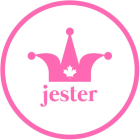
The plus side of having a crystal-clear image of your target audience is knowing that they want what you have. They are the magical portion of the population that resonates with your product, service and brand story. They are the reason you are in business and the pathway to your success. Knowing them will make things so much easier.
The downside of a murky audience is having your marketing efforts wasted. After the hard work of developing a concept and strategy, you want the right eyes to see the result. When the audience is vague, it can mean your message gets overlooked as irrelevant. But, when you invest in specifying your unique audience, your messages reach those who need and want your offerings.
Cater to Your Audience — Open the Door Wide
At first, narrowing the target audience can feel limiting, like closing the door on potential customers. But, in truth, it opens the door wider for those who want in.
It would be incredible to have the entire population as a target audience. However, people are diverse and rarely subscribe to the same interests en masse.
The target audiences for a craft distillery are vastly different from those of a boutique consignment shop or a local political party. So, it stands to reason that clarifying the ideal clientele means being able to speak their language — deliver messages about your offerings in a way that resonates with them most.
- Use phrasing and terminology your target audience is comfortable with
- Choose the media they relate with best: text, interactive graphics, video
- Establish a dynamic website and social media presence
Social media has become an indispensable way of reaching customers, knowing which platforms your target audience uses is crucial.
Create a Persona and stay Focused
A persona is like a target audience template. Once established, the persona makes structuring campaigns, incentives and messages easier because you know how to connect with your audience.
You may begin to see patterns when you look closely. People in the target audience often share characteristics like age, gender, values, interests and lifestyle. Knowing these details effectively shapes the persona.
Additionally, identify what problems they have that your offerings solve and what barriers might prevent them from adopting your brand. Outlining these details creates an easy frame for how, when and why you communicate with your target audience.
Address Audience Barriers
When you know your priority audience like the back of your hand, you understand what they are looking for and can foreshadow what barriers prevent them from getting on board with your campaign or brand.
A strategy to minimize obstacles might include developing an engaging FAQ page on your website or producing a series of informative videos that solve your clients’ potential problems.
The important thing is to put yourself in your audiences’ shoes and see what might hinder them from fully embracing your brand. So have a plan to counterbalance possible barriers like price, quality, accessibility or environmental impact. Thinking ahead speaks volumes to potential customers and shows a level of care.
All things considered, getting to know your target audience can be a rewarding step in your marketing plan.
